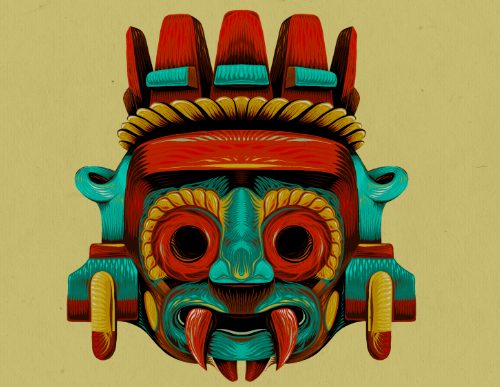Tlaloc: The Enigmatic God of Rain and His Role in Mesoamerican Mythology

Introduction:
In the vast pantheon of Mesoamerican deities, Tlaloc stands out as one of the most intriguing and multifaceted gods. Revered by ancient civilizations like the Aztecs, Tlaloc’s influence permeated various aspects of daily life and cultural rituals. But who exactly is Tlaloc, and what was his significance in ancient Mesoamerican societies? This article delves deep into the mysteries surrounding Tlaloc, answering questions about his identity, responsibilities, moral alignment, and power.
Also Read:- Seppuku: The Ancient Japanese Ritual and Its Historical Significance
Who is Tlaloc the god of?
Tlaloc, often depicted with goggle-like eyes and fanged teeth, is primarily recognized as the god of rain in Mesoamerican mythology. However, his domain wasn’t limited to just precipitation. As the deity of water and fertility, Tlaloc played a crucial role in agriculture, ensuring that crops received the necessary rainfall to thrive. His influence extended to other natural phenomena, such as thunderstorms, hail, and even droughts.
What is Tlaloc responsible for?
Beyond his control over the weather, Tlaloc held several other responsibilities:
- Guardian of the Mountain: Mountains were seen as sacred reservoirs of freshwater. Tlaloc was believed to reside in them, releasing rain when pleased and withholding it when angered.
- Protector of Children: In Aztec culture, Tlaloc was also associated with the protection of children, particularly those who met untimely deaths. These souls were believed to reside in Tlalocan, a paradisiacal realm ruled by Tlaloc.
- Life and Death: As a deity of fertility, Tlaloc was invoked during ceremonies to ensure bountiful harvests. Conversely, he could bring about droughts and famine if not appeased properly.
Is Tlaloc a good god?
The concept of “good” and “evil” in Mesoamerican religious beliefs is not as binary as in many Western religions. Tlaloc, like many deities, embodied both benevolent and malevolent aspects:
- Benevolent Tlaloc: When pleased, Tlaloc blessed the land with rain, ensuring successful harvests and prosperity. His protective nature towards children further cements his benevolent side.
- Wrathful Tlaloc: However, if the rituals and offerings didn’t appease him, Tlaloc could unleash his wrath in the form of droughts, floods, or thunderstorms. This duality served as a reminder of the delicate balance between humans and the gods.
How powerful was Tlaloc?
Tlaloc’s significance in Mesoamerican cultures is evident in the grandeur of the ceremonies and rituals dedicated to him. His power was multifaceted:
- Control Over Elements: Tlaloc’s primary power was his control over rain and water, essential elements for agriculture-based societies.
- Ruler of Tlalocan: As the ruler of Tlalocan, he held dominion over the souls of children and those who died from water-related causes.
- Influence in Daily Life: The fear of invoking Tlaloc’s wrath led to various rituals, including human sacrifices, to appease him. This underscores his immense influence over daily life and societal practices.
Conclusion:
Tlaloc, with his dual nature and vast responsibilities, remains one of the most captivating figures in Mesoamerican mythology. His role as the god of rain, protector of children, and wielder of life and death showcases the intricate and profound relationship ancient civilizations had with their environment and deities. Understanding Tlaloc provides a glimpse into the beliefs, fears, and hopes of the people who revered him, reminding us of the timeless nature of human spirituality and our eternal quest to understand the divine.
FAQs on Tlaloc: The Enigmatic God of Rain
- Who is Tlaloc in Mesoamerican mythology?
- Tlaloc is primarily recognized as the god of rain in Mesoamerican mythology. He is also associated with water, fertility, and various natural phenomena like thunderstorms and droughts.
- Where did Tlaloc reside?
- Tlaloc was believed to reside in mountains, which were seen as sacred reservoirs of freshwater.
- What is Tlalocan?
- Tlalocan is a paradisiacal realm ruled by Tlaloc. It is believed to be the resting place for the souls of children and those who died from water-related causes.
- Was Tlaloc considered a benevolent or malevolent deity?
- Tlaloc embodied both benevolent and malevolent aspects. He could bless the land with rain and protect children, but he could also unleash droughts, floods, or thunderstorms if not appeased properly.







